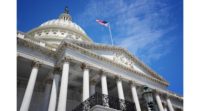The New Orleans City Council voted to reverse itself and reestablish the use of facial recognition technology as the city contends with a level of violent crime not seen since Hurricane Katrina.
On a 4-2 vote, the city council on July 21 approved an ordinance that supports parts of a broader surveillance ban passed by the council in 2020. The NOPD will now be able to use facial recognition software in investigations with oversight.
Deploying the technology has sparked privacy concerns for years from city leaders and the ACLU. The software is used by law enforcement in conjunction with New Orleans’ Real Time Crime Center, which leverages more than 500 cameras citywide.
In a statement, New Orleans Mayor LaToya Cantrell said the return of NOPD’s use of facial recognition represents “a tremendous stride” toward increased public safety.
“I am grateful that the women and men of the NOPD now have this valuable, force multiplying tool that will help take dangerous criminals off our streets,” Cantrell said. “Passage of this ordinance by the City Council now paves the way to increase the NOPD’s ability to protect and serve the residents, businesses, and visitors to the City of New Orleans. This is a win for everybody.”
The Security Industry Association (SIA) released an analysis of the new developments in New Orleans. The article describes key protections in common between New Orleans and Virginia, where lawmakers recently replaced the state’s ban on law enforcement use of facial recognition technology with comprehensive rules.
“The facial recognition measures in New Orleans and Virginia have key protections in common,” SIA Senior Director of Government Relations Jake Parker writes in the analysis. “Both address concerns about possible misidentification by ensuring potential match results alone are never considered probable cause for an arrest or to obtain a search warrant. This ensures that in the hands of law enforcement, facial recognition remains a post-incident investigative tool to aid identification — but not confirm identities.”
Go here to read the full analysis.




